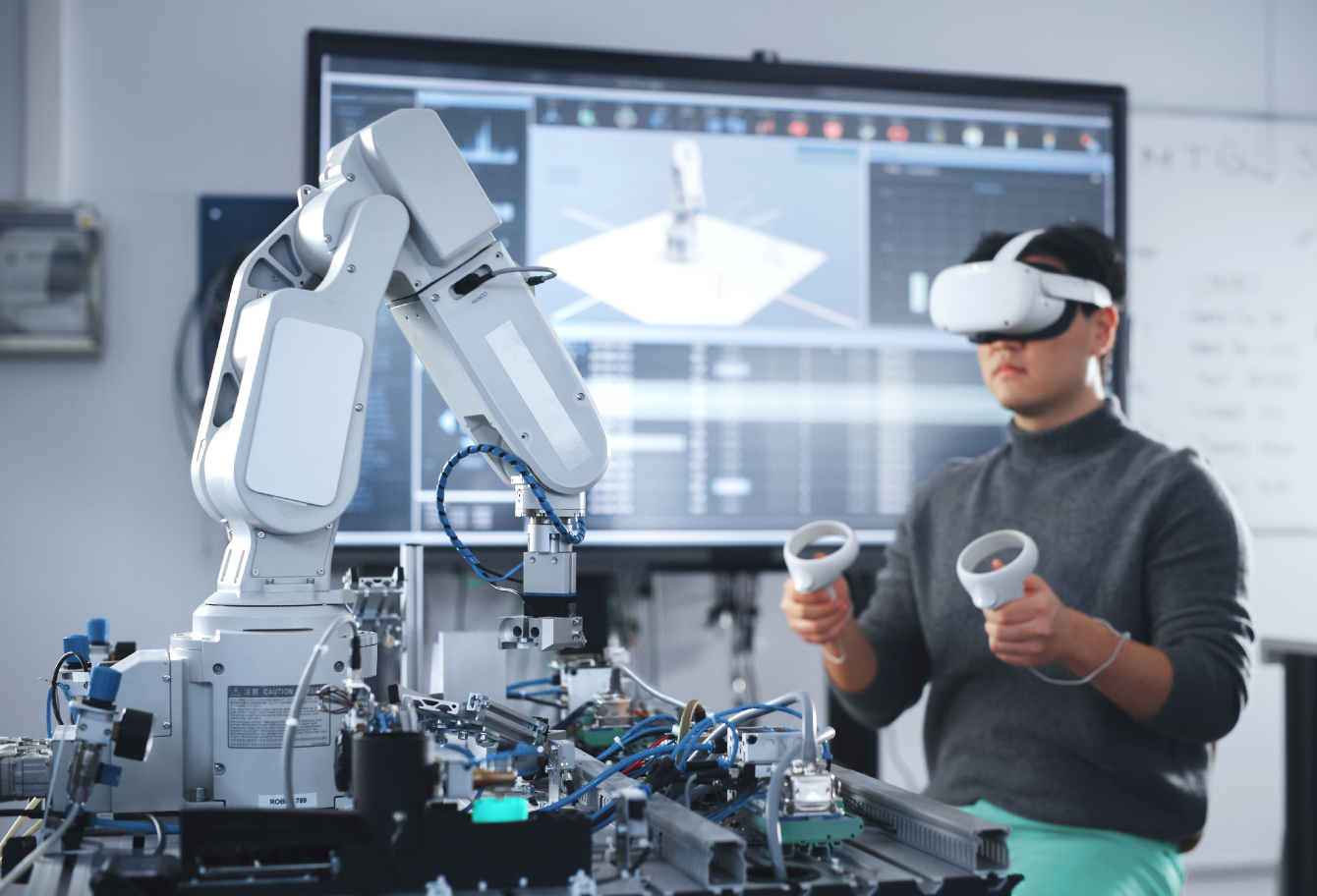Key Takeaways:
- Embedded systems and IoT help achieve business goals that involve harmonizing different devices and their operational factors.
- AI's generative and predictive capabilities devise optimal device settings, automatically implemented as operational factors change.
- AI in embedded systems will eventually support more unique and personalized service approaches as more domain knowledge is applied.
Key Trends Shaping the Future of Embedded Systems
The role of embedded systems within the business world has massively expanded in recent years, and with good reason. The range of applications that can be served, thanks to integration with the likes of the Internet of Things (IoT), and the Industrial Internet of Things (IIoT), has grown and has enabled new levels of smart technology and interconnected ecosystems. It’s no surprise, therefore, that the global market value for embedded systems is set to reach more than $173 billion by 2032, according to Market.us.
However, as innovative embedded solutions get smarter and more capable, the management and integration responsibilities around them will get more complex. And at the same time, there will also be a need to keep pace with the latest technologies and improvements in embedded system applications, so as to maintain or even accelerate competitive advantage.
So what does the future of embedded systems look like?
Predictions for the Future of Embedded Systems
In our view, there are six key embedded technology trends to stay abreast of in the months and years ahead:
![]() Greater IoT Integration
Greater IoT Integration
The ever-closer relationship between IoT and embedded systems are having a major impact on connectivity and data exchange. The ability to bring more and more devices into an IoT ecosystem means it will never be more important to make things as smooth as possible, whether it’s enabling seamless communication from one part of a network to another, or supporting data processing in real time.
![]() More Emphasis on Edge Computing
More Emphasis on Edge Computing
Connected to the previous point, edge computing is satisfying increased demand for super-fast processing, similarly fast reaction times and a greater focus on data privacy. The combination of edge computing and cloud-based data processing means that it will be far easier for businesses to reduce latency, and to maintain operations without the need to always be connected to the Internet.
![]() AI revolution
AI revolution
Embedded systems are being transformed by artificial intelligence, just like almost every other area of technology. For example, AI is empowering embedded devices with the capability to make decisions in real-time, thanks to highly advanced algorithms and developments in neural networks. This greater convergence between AI and embedded systems will have a huge effect on personalization, response and user experience in a huge number of applications and industries. In short: embedded systems are getting a whole lot smarter.
![]() Security and Regulation
Security and Regulation
Regulatory scrutiny, and legislation about data privacy, have been increasingly in the spotlight over the last few years. But the ways in which data is used by AI, and how AI tools can be utilized for malicious purposes by attackers, mean that security will only become of even greater importance. Embedded system applications that are more complex and integrated require even more robust security, to protect a potentially very large attack surface. This should start with advanced security protocols fully integrated across an embedded network.
![]() Smarter Connectivity
Smarter Connectivity
The growth of IoT, in line with the advancing rollout of 5G technology, is enabling smarter and smarter connectivity all the time. 5G is allowing devices to be incorporated into IoT networks faster, more reliably and more cost-effectively than ever before, and support fast and dependable data transfer throughout. This allows the capabilities of embedded system networks to be expanded, both in terms of their physical locations, and their connection capability.
![]() The Rise of AR and VR
The Rise of AR and VR
Augmented and virtual reality is gradually becoming more practical for a wider number of use cases. These can range from giving workers in industrial environments real-time data and insights, to delivering emails or other information through smart glasses and wearables. For embedded systems, VR can be used in virtual prototyping that allows product concepts to be visualized before they go into production, so that development cycles can be expedited, and problems ironed out proactively.
How AI is Enhancing Embedded Systems
AI is becoming particularly important in helping different systems interact intuitively towards a common business goal and adapt as goals change. Consider an industrial-scale plant with servers, miners, robots or other computational devices.From uptime and reserve power stipulations to cooling requirements and weather changes, there’s plenty to keep up with.
Business Goals AI Can Address
- Having enough backup power to run systems during prolonged outages.
- Keeping machines at a safe operating temperature.
- Minimizing emissions from fossil fuel-powered generators.
- Moderating energy expenditure.
- Maintaining a respectable level of performance/output for their machines.
How AI Collaborates with Other Systems to Achieve These Goals
Many of these goals will be partly underpinned by IoT sensors constantly reporting what’s happening in various systems. AI can automatically throttle system performance, redistribute computational resources based on load changes, increase/decrease cooling and switch to and from backup power sources when necessary.
GenAI models can predict outcomes in extreme conditions, such as prolonged power outages during high-temperature periods or usage spikes during cooling system maintenance.
How AI Has Improved Data Centre Operations
At one point, AI started helping some data centres reduce their cooling costs by up to 40%. Eventually, AI became key to ensuring power efficiency in other data centres. Currently, AI also helps keep track of the safety of working conditions in various data centres. With 2025 upon us, there’ll be a major focus on using AI and predictive analytics to chart a path towards running data centres entirely on renewable energy.
Get Prepared with Ciklum
To take advantage of all these trends, it’s vital that you have access to deep expertise in embedded systems and emerging technologies. If you don’t have that in-house, then teaming up with an expert partner is the way forward.
Ciklum has the deep domain knowledge, technical proficiency, and focus on innovation that can help you effectively navigate the complexities of the embedded landscape. Our leading IoT expertise, extensive capabilities, and end-to-end approach to development means you can stay ahead of the curve with cutting-edge solutions tailored to specific industry needs. From hardware and software development, through design engineering and AI, to full cloud integration, we have the global skills and expertise to help.
To find out more or discuss your specific requirements, get in touch with our team today, or explore our library of case studies and insights in detail.

































